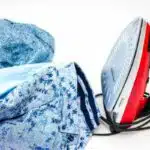As a textile expert, I have encountered numerous individuals who are hesitant to iron wool garments due to the fear of ruining the fabric. Wool is delicate and requires special care to maintain its integrity. However, avoiding ironing wool completely can lead to wrinkles and an unkempt appearance, which can be detrimental to one’s professional or personal image.
In this article, I will provide a step-by-step guide on how to properly iron wool garments without damaging them. By following these seven steps, you can preserve your wool clothes for longer and maintain their original quality. Whether you’re preparing for an important meeting or simply want to look your best, these tips will ensure that your wool garments remain in pristine condition.
Understanding The Characteristics Of Wool
Wool is a natural fiber that comes from the fleece of sheep or lamb. It is known for its warmth, softness, and durability, making it a popular choice for clothing items such as sweaters, suits, and coats. However, wool requires special care to maintain its quality and appearance.
One of the main characteristics of wool is that it is prone to shrinking when exposed to heat and water. This is because wool fibers have microscopic scales that can interlock and tighten when agitated or exposed to high temperatures. Additionally, wool has a natural crimp or wave pattern that gives it elasticity and resilience. This property allows wool garments to stretch without losing their shape or becoming misshapen.
Another important feature of wool is its ability to absorb moisture without feeling damp. Wool can absorb up to 30% of its weight in water before it starts to feel wet. This makes it an excellent choice for outdoor activities because it wicks away sweat and keeps the wearer warm even when wet. However, this property also means that wool can take longer to dry than other fabrics.
To properly care for wool items, it’s essential to understand these fabric properties. By doing so, you can prevent damage caused by shrinking or stretching during ironing. In the next section, we’ll discuss how to prepare your ironing equipment before starting the process.
Preparing Your Ironing Equipment
Did you know that an estimated 80% of people worldwide iron their clothes? This household chore has been around for centuries and is still a crucial aspect of garment care today. However, ironing wool can be quite tricky if not done correctly. To ensure your woolen garments stay in pristine condition, you need to prepare your equipment accordingly.
Essential equipment for ironing wool includes an ironing board, a steam iron, and a spray bottle filled with distilled water. It’s essential to use distilled water because tap water contains minerals that can damage the fibers in wool fabric over time. Your iron should also have adjustable temperature settings to suit different fabrics.
When it comes to ironing techniques, always start with the lowest temperature setting on your iron. Wool is delicate and can easily become damaged by high heat levels. Use steam to help remove any wrinkles or creases gently. For best results, place a damp cloth over the garment before applying the iron to prevent direct contact between the hot plate and the wool.
To achieve wrinkle-free clothing, proper preparation is key. Essential equipment and correct techniques are crucial in ensuring that your woolen garments remain in excellent condition without losing their shape or texture. Now that you’ve got your equipment ready let’s move on to choosing the right ironing temperature for your woolen clothes!
Choosing The Right Ironing Temperature
Ironing wool can be a tricky task because it is a delicate fabric that requires special care. One of the most important aspects of ironing wool is choosing the right temperature. Using too much heat can cause damage to your clothes, so it’s essential to know what temperature to use.
Ironing techniques vary depending on the type of wool you have. For example, if you have a thick wool sweater, you should use a low temperature setting on your iron. On the other hand, if you have a thin wool dress or blouse, you may need to use a higher temperature setting. Wool care tips suggest using steam while ironing wool as it helps to relax and soften the fibers, making them easier to press.
It’s crucial to note that different irons have different temperature settings and features such as steam options and auto shut-off functions. Always read the manufacturer’s instructions before using an iron for the first time. Additionally, testing the fabric for heat sensitivity is an essential step before ironing any garment made from wool or other delicate fabrics.
Testing The Fabric For Heat Sensitivity
To ensure that the wool fabric is not damaged during ironing, it is important to test its heat sensitivity. There are various testing methods that can be used to determine if the fabric can withstand the heat of an iron. One simple method is to touch a small, inconspicuous area of the fabric with the tip of the iron.
If the wool fabric starts to scorch or discolor, then it is likely too delicate for ironing. Another method involves placing a damp cloth over a small section of the garment and then ironing it on a low heat setting. If there are no signs of damage, then it may be safe to proceed with ironing.
It’s important to note that not all wool fabrics have the same heat tolerance. Some may require lower heat settings while others can withstand higher temperatures. As such, it’s recommended to always test a small section of the garment first before proceeding with ironing. By taking these precautions and testing methods into consideration, you can help preserve your wool garments and prevent potential damage from high heat levels.
Dampening The Garment
After testing the fabric for heat sensitivity, it is now time to dampen the garment. Dampening the wool will help prevent shrinkage and make it easier to iron. It is essential to use distilled water when dampening wool, as tap water may contain minerals that can damage the fabric.
To dampen the garment, fill a spray bottle with distilled water and lightly mist the wool. Be careful not to over-saturate it, as this can cause stretching or damage. Another method is to place a damp pressing cloth over the wool while ironing. This will also help protect the fabric from direct heat and prevent any shine marks on delicate areas.
Now that you have dampened your garment and prepared your pressing cloth, it’s time to place it on the ironing board. Make sure your board is clean and free of any debris that may transfer onto your clothing. Gently lay your wool garment flat on top of the pressing cloth, being careful not to wrinkle or crease it in the process. Continue onto the next step for more details on how to properly iron wool without damaging it.
Placing The Garment On The Ironing Board
When preparing the ironing board, it is important to ensure that it is clean, free of dust, and that the surface is smooth. Additionally, it is important to ensure that the board is adequately padded and that the padding is in good condition. When placing the garment on the board, it is important to ensure that the fabric is not stretched or distorted and that the garment is not folded or creased. Finally, the garment should be secured with pins if necessary, to prevent it from slipping while ironing.
Preparing The Board
When it comes to ironing wool, one of the essential steps is to prepare the board correctly. A measuring board is an ideal choice for this task as it ensures that the garment is placed uniformly on the board. Additionally, a measuring board can help you avoid creases or wrinkles in your garment while ironing. You should also ensure that the board is stable and secure before placing your woolen garment on it.
Choosing a suitable cover for your ironing board plays a crucial role in ensuring that your woolen garment remains unscathed during ironing. An excellent choice for a cover would be one made from thick cotton material with a smooth surface. This type of cover will provide adequate cushioning and also prevent any scratches or marks on the fabric while ironing. Avoid using synthetic covers, as they may melt when exposed to high temperatures, leaving unsightly marks on your garments.
Once you have selected a suitable cover and prepared the board, you can place your woolen garment on it. Make sure that you spread out the garment smoothly and avoid any lumps or folds in the fabric. This will ensure that you get even results when ironing. Remember to start with low heat settings and gradually increase them until you find the optimal temperature for your woolen garment. By following these steps, you can enjoy freshly pressed woolen clothes without damaging them in any way.
Positioning The Garment
Properly positioning the garment on the ironing board is essential to avoid wrinkles and achieve even results. Before placing the garment on the board, it is crucial to ensure that there are no obstructions or bumps on its surface. This will allow for a smooth and even surface where you can comfortably press your woolen garment without any difficulty.
When placing the garment on the board, it is advisable to start with smaller sections of the fabric and work your way up gradually. This approach allows you to focus on specific areas of the garment without losing sight of other parts. It also helps to minimize wrinkling caused by bunching up or folding during ironing.
Another important aspect of positioning your woolen garment is ensuring that it hangs over the edges of the board evenly. This technique prevents any creases or folds from forming when pressing around corners or curves in the fabric. Properly positioning your woolen garment goes a long way in achieving wrinkle-free results, which makes it worth taking time to get this step right.
Ironing The Back Of The Garment
Ironing the back of a garment can be a tricky task, especially when it comes to delicate fabrics such as wool. As a textile expert, my advice is to always start ironing from the collar downwards. This allows you to avoid burns and ensures that any wrinkles or creases are removed in a controlled manner. Additionally, using a pressing cloth can help protect delicate areas of the fabric.
When ironing the back of a garment, it is important to pay special attention to any delicate areas such as buttons, zippers or pockets. These areas require careful handling to prevent damage or distortion. To achieve optimal results, use low heat settings and press gently on these areas with the tip of your iron.
Remember that wool is a sensitive fabric that requires extra care when laundering. Ironing wool should be done with caution and at low temperatures. By following these tips for ironing the back of your woolen garments, you’ll preserve their quality and keep them looking their best for years to come.
Moving on from ironing the back of your garment, let’s discuss how to effectively iron its sleeves.
Ironing The Sleeves
Sleeve Ironing Techniques:
Ironing the sleeves of a woolen garment may seem like a daunting task, but it is essential to maintaining the garment’s quality. The process requires careful attention to detail and proper technique to avoid damaging the fabric. Here are some sleeve ironing techniques that you can follow to preserve your clothes.
Firstly, it is important to use a pressing cloth when ironing sleeves. This will protect the wool from direct heat that can cause scorch marks or even melt the fibers. Additionally, using a steam iron on medium heat setting while keeping the iron moving in one direction can help eliminate creases and wrinkles without damaging the fabric.
Common Sleeve Ironing Mistakes:
While ironing sleeves, there are some common mistakes that you should avoid. First, do not apply too much pressure when pressing on the woolen garment as this can cause permanent creases or even damage the fabric. Another mistake is using an iron with a dirty plate or one that has been previously used with synthetic fabrics as this can cause staining on your woolen garment.
When ironing sleeves, following these techniques and avoiding these common mistakes will ensure that your woolen garment remains intact and maintains its quality for longer periods of time.
Next up: Ironing The Front Of The Garment…
Ironing The Front Of The Garment
Ironing is an essential part of garment care, as it helps to preserve the front of the garment. Heat setting is the most effective way to get rid of wrinkles and creases on clothes. The amount of heat and steam used is dependent on the fabric, but temperatures should generally remain between 150-200°C. The iron should be passed over the collar, pocket, cuffs, placket, and hem for a complete finish. Steam should be used carefully, as it can cause shrinkage of certain fabrics. Care should be taken when ironing fabrics such as wool to ensure that the temperature is not set too high and the garment is not left exposed to the heat for too long.
Ironing
Ironing wool can be a daunting task, as it requires special attention and techniques to preserve the fabric’s quality. Ironing techniques for wool are different from other fabrics because they require lower heat settings, gentle pressure, and steam to prevent damaging the fibers. Wool is a delicate fabric that can shrink or stretch if mishandled during ironing.
To iron wool properly, use an iron with a temperature gauge and select the “wool” setting. If your iron does not have this feature, set it to low heat. Another tip is to use a pressing cloth between the iron and the wool garment to avoid direct contact with high heat. Move the iron gently in a circular motion over the fabric to distribute heat evenly across its surface.
Ironing tips for wool garments include using steam during the process. Steam helps relax and soften the fibers, making them easier to manipulate without causing damage. Be sure not to leave the iron in one place for too long as this can create shiny patches on the fabric’s surface. By following these simple steps, you can achieve wrinkle-free wool clothes while preserving their quality for longer wear.
Front Side
Now that we have discussed the ironing techniques for wool, let us move on to ironing the front side of the garment. The front side of a garment is usually the most visible and requires extra attention during ironing. Ironing the front side involves pressing out wrinkles and creases while avoiding common mistakes that can damage the fabric.
To begin, start with a clean iron and set it to the appropriate temperature according to the type of fabric. If you’re unsure about the correct temperature, refer to the care label instructions or consult a textile expert. Next, lay the garment flat on an ironing board or any surface suitable for ironing. Begin by ironing around the collar area first before moving down towards the shoulders and sleeves.
Common mistakes when ironing the front of a garment include using too much pressure or leaving the iron in one place for too long. This can result in shiny patches or scorch marks on delicate fabrics such as silk or cotton. It’s also essential to avoid using starch as it may cause discoloration over time. Instead, use steam during ironing to relax and soften fibers without causing damage. By following these simple tips, you can achieve a wrinkle-free and professional-looking garment while preserving its quality for longer wear.
Heat Setting
When ironing the front of a garment, it’s important to pay close attention to the heat setting. Adjusting the temperature according to the fabric type is crucial in preventing damage and achieving optimal results. Using too high of a heat setting can scorch delicate fabrics such as silk or cotton, while using too low of a heat setting may not effectively remove wrinkles and creases.
Maintaining consistency in heat setting throughout the ironing process is also important. If the temperature changes abruptly, it may cause uneven ironing and potentially lead to fabric damage. It’s recommended to start with a lower temperature and gradually increase it if necessary. Additionally, if multiple fabrics are present on one garment, consider using a pressing cloth or adjusting the temperature accordingly for each section.
In summary, properly adjusting the heat setting when ironing the front of a garment is crucial in preserving its quality and achieving professional-looking results. Maintaining consistency in temperature and utilizing additional tools such as pressing cloths can further prevent damage and ensure even ironing throughout the entire garment. By following these tips, you can effectively remove wrinkles while prolonging the lifespan of your favorite garments.
Ironing The Collar And Lapels
The collar and lapels of a wool garment require careful attention during the ironing process. To start, it is essential to choose the right ironing technique to avoid damaging the fabric. The collar should be ironed from the center outwards, while the lapels should be ironed from top to bottom on both sides. By following this technique, you can ensure that you maintain the shape of both the collar and lapels while avoiding wrinkles.
When ironing a woolen collar or lapel, it is crucial to use a low temperature setting on your iron. High temperatures can scorch and damage wool fibers permanently. If you notice any steam coming out of your iron while you are working, stop immediately as this indicates that the temperature is too high. Additionally, make sure that your iron is clean before use as any stains or dirt marks can transfer onto your clothes.
In summary, when ironing a woolen collar or lapel, it is important to take your time and use a gentle touch. Remember to follow proper techniques for each area of the garment and avoid using high heat settings that could damage wool fibers. With these tips in mind, you can easily preserve the quality of your woolen clothes for years to come.
Transition: Next we will move on to discussing how to properly iron the pockets of a wool garment.
Ironing The Pockets
When ironing wool garments, it is important to take the time to properly address each element of the garment. This includes ironing the pockets. Pocket placement and size can have an impact on the overall appearance of the garment and its ability to maintain its shape over time.
When ironing pockets, it is essential to pay attention to their placement. Pockets that are located too high or too low on a garment can disrupt its intended silhouette. Take care when pressing around pockets, as they often contain seams that may be more delicate than other areas of the garment.
In addition to pocket placement, pocket size must also be considered when ironing wool garments. Large or bulky pockets may require extra attention in order to maintain their shape and prevent distortion while ironing. Be sure to use a pressing cloth or steam setting when working around pockets in order to avoid damaging them during this process.
Moving onto the next step in ironing wool, careful attention must also be paid to the hemline of the garment.
Ironing The Hem
When it comes to ironing wool clothing, proper technique is key to maintaining its quality and longevity. When ironing the hem of a wool garment, there are a few things to keep in mind to ensure that you are not damaging the fabric. First and foremost, always use a low heat setting on your iron, as high heat can cause the wool fibers to shrink or become misshapen.
To begin, lay the garment flat on your ironing board with the hem facing up. Place a pressing cloth over the hem before applying any heat. This will protect the fabric from direct contact with the iron and prevent scorch marks or other damage. Next, lightly press down on the hem with your iron using gentle strokes. Be sure to lift and reposition your iron frequently, rather than dragging it across the fabric.
One common mistake to avoid when ironing wool is using too much pressure. Applying too much pressure can cause wrinkles or creases in the fabric that are difficult to remove. Another mistake is leaving your iron in one spot for too long, which can cause scorch marks or even burn holes in your garment. By following these proper techniques and avoiding common mistakes, you can easily achieve a crisp and clean hem on your wool garment without causing any damage.
Moving onto hanging garments to cool after pressing them…
Hanging The Garment To Cool
After ironing the hem, it’s time to hang the garment to cool. Similar to how a freshly baked cake needs to cool down before being served, your woolen garments need some time to settle after being heated. Hanging the garment allows for air circulation that will prevent wrinkles from forming and help maintain its shape.
Benefits of air drying cannot be overstated when it comes to preserving clothes. It not only saves energy but also reduces wear and tear on your garments. Wool is a delicate fabric that can easily lose its shape and texture if dried using a machine. Instead, hang your woolen clothes in a well-ventilated area away from direct sunlight, and let them dry naturally.
Using fabric softener is another way of maintaining the quality of your woolen garments. This product helps reduce friction between fibers during washing, which prevents them from breaking or becoming tangled. Softeners also add a layer of protection that guards against static electricity buildup, which can cause damage to delicate fabrics like wool.
Now that you’ve hung your garment to cool down and air-dryed it properly with fabric softener, it’s time to store it properly. We’ll discuss this in the next section so you can ensure your woolen clothing stays in top condition for years to come.
Storing The Garment Properly
Wool is a durable and resilient fabric that can last for many years with proper care and storage. Temperature is a major factor in preserving wool fabrics, as extreme temperatures can cause the fiber to shrink or stretch. To store wool properly, it should be kept in a cool, dry place away from direct sunlight or any other source of heat. To iron wool, it is important to use the appropriate temperature setting, as too high of a temperature can cause the fabric to shrink or burn.
Storing Wool
Wool garments are luxurious, comfortable and can last for years when properly cared for. One essential aspect of caring for wool clothing is storing them correctly. Wool storage is critical to prevent moth infestation, which can cause extensive damage to your clothes.
To store wool garments, ensure that they are clean and dry before placing them in a storage container. Before storing, fold the garment neatly and place it in a breathable fabric bag or wrap it in acid-free tissue paper to protect it from dust and moths. Store the containers in areas with low humidity levels and minimal exposure to light.
In addition to proper wool storage, moth prevention measures should also be taken. Cedar chips or balls, lavender sachets or essential oil drops on tissue paper are all effective natural remedies for deterring moths from your woolen collection. By following these steps to store your woolen garments correctly and prevent moth infestations, you can enjoy their warmth and elegance for many years to come.
Temperature Control
When it comes to storing wool garments, temperature control is a crucial aspect that should not be ignored. Common mistakes often made in wool storage include exposing the garments to extreme temperatures, which can cause damage such as shrinking or stretching. Best practices for temperature control involve storing the garments in areas with consistent temperatures between 60-70 degrees Fahrenheit and avoiding placing them near heat sources such as radiators or direct sunlight.
Additionally, humidity levels play a significant role in how well wool garments are stored. High humidity levels can cause mildew and mold growth, while low humidity levels can lead to dryness and brittleness of the fibers. The best way to maintain proper humidity levels is by storing wool garments in areas with relative humidity between 40-50%. An ideal storage location may include a closet equipped with a dehumidifier or an air-conditioned room.
In conclusion, temperature control is an essential factor in properly storing wool garments. By following best practices such as maintaining consistent temperatures and humidity levels, one can prevent common mistakes that result in garment damage. Proper storage techniques ensure that woolen clothes remain luxurious and elegant for many years to come.
Troubleshooting Common Issues
Common mistakes in ironing wool can lead to irreversible damage to the garment. The most common mistake is using too high of a heat setting, which can cause shrinking and burning of the fibers. Another mistake is not using a pressing cloth, leading to shiny spots on the fabric where direct heat was applied. Lastly, ironing over embellishments or buttons can cause them to melt or become dislodged.
To prevent damage while ironing wool, it is important to follow best practices and troubleshooting tips. First, always check the care label for specific instructions on how to properly care for the garment. Use a low heat setting and test a small inconspicuous area before ironing the entire garment. To prevent shiny spots from direct heat, use a pressing cloth made of cotton or muslin between the iron and fabric. Additionally, avoid ironing over embellishments by carefully working around them with the tip of the iron.
In summary, preventing damage while ironing wool requires following best practices and understanding common mistakes that can be made. Always read the care label for specific instructions and use a low heat setting while testing an inconspicuous area first. Use a pressing cloth made of cotton or muslin to prevent shiny spots and carefully work around any embellishments with the tip of your iron. By following these tips, you can successfully preserve your wool garments for years to come without causing any damage during the ironing process.
Conclusion
Wool is a delicate fabric that requires careful handling, especially during ironing. To preserve your woolen clothes and keep them looking their best, it is essential to follow the right steps when ironing. From understanding the characteristics of wool to choosing the right ironing temperature and dampening the garment, there are several factors to consider.
In conclusion, it is worth noting that according to a recent survey conducted by the Woolmark Company, 82% of consumers believe that wool clothes last longer than other materials. This statistic highlights how important it is to take good care of your woolen garments so that they can last for years. By following the seven steps outlined in this article, you can ensure that your woolen clothes remain in excellent condition and retain their quality over time.
As a textile expert or garment preservation specialist, I would recommend taking extra care when ironing woolen clothes. Remember to always test the fabric for heat sensitivity and choose the appropriate temperature setting on your iron. Avoid using too much pressure while ironing and hang your garments to cool after ironing. Additionally, store your woolen clothes properly by folding them neatly or hanging them on hangers in a cool, dry place away from direct sunlight. By implementing these tips into your routine, you can enjoy wearing your favorite woolen outfits for years to come.
Image Credits




















![How To Wash And Care For White Clothes 20 The only genuine borax soap cleanses hygienically saves the clothes and hands. 20 Mule-Team brand Boraxo white laundry soap [front]](https://green-life.blog/wp-content/uploads/2023/05/YDXLLCovnOjq-150x150.jpg.webp)








